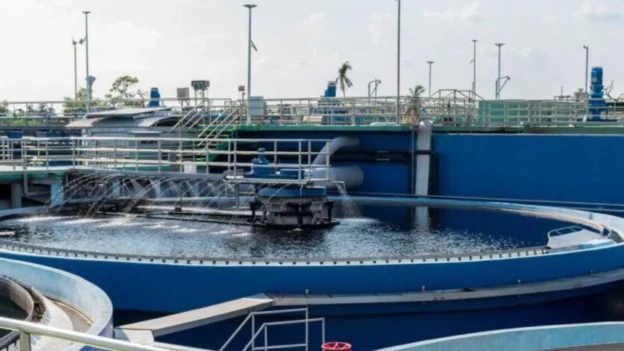A team of researchers from leading universities and research departments has developed an effective and sustainable method for the decontamination of wastewater. This system, which uses a combination of zeolites and ozone, promises to facilitate the reuse of water for agriculture, the UJI said in a statement.
The potential behind wastewater decontamination
Currently,water reuse is a strategy that the European Union plans to implement in the medium and long term to address the scarcity of this vital resource. According to Javier Navarro, a researcher at the University Institute of Industrial Safety, Radiophysics and Environment (Instituto Universitario de Seguridad Industrial, Radiofísica y Medioambiental (ISIRYM) of the UPV, diffuse pollution sources, such as runoff and untreated catchment systems, present problems due to the presence of emerging micropollutants such as pharmaceuticals, which despite their low concentration, have a high metabolic activity.
Elena Pitarch, researcher at the University Institute of Pesticides and Water of the UJI, highlighted the importance of eliminating residues of drugs and other phytosanitary products from water treated by conventional methods, such as municipal wastewater treatment plants. This process is vital to reduce the presence of micropollutants and to allow the wastewater to wastewater reuse in a manner that is safe for people and the environment.
In a recent study, researchers demonstrated that the use of commercial zeolites, combined with ozone, can remove pharmaceutical compounds from wastewater more quickly and effectively. Antonio Chica, from the Institute of Chemical Technology, pointed out that this system uses catalysts that accelerate and improve water treatment, eliminating 90% of the drugs in just ten minutes. Without zeolite as a catalyst, this process would take 25 minutes, demonstrating that catalytic ozonation is a cost-effective alternative.
Application in wastewater treatment plants
Tests carried out in real waters confirm the feasibility of this method in real operational situations. In addition, the technology is scalable and can be implemented in existing wastewater treatment plants, facilitating the treatment of large volumes of water and its subsequent reuse.
Ricardo Torres Palma, from the Environmental Remediation and Biocatalysis Research Group of the University of Antioquia, concluded that the combination of zeolites and ozone offers an efficient system for oxidation of micropollutants, without additional environmental risks, because ozone decomposes into oxygen and other harmless compounds, and zeolites are natural inorganic substances that do not generate toxic substances.
Follow us on social networks and don’t miss any of our publications!
YouTube LinkedIn Facebook Instagram X
Source and photo: Castellón Al Día / El Mundo

